Louis Vuitton, Gucci, and BMW.
What do all of these brands have in common?
They sell luxury goods.
I’ve always found the luxury industry to be absolutely fascinating as a copywriter and marketer.
I believe it’s one of the best examples of how proper branding, targeting, and marketing can generate incredible revenue.
Seeing as the luxury industry has seen continual growth in the past decade, there are no signs of it slowing down, and the strategies I’m teaching you today play a big role in its expansion.
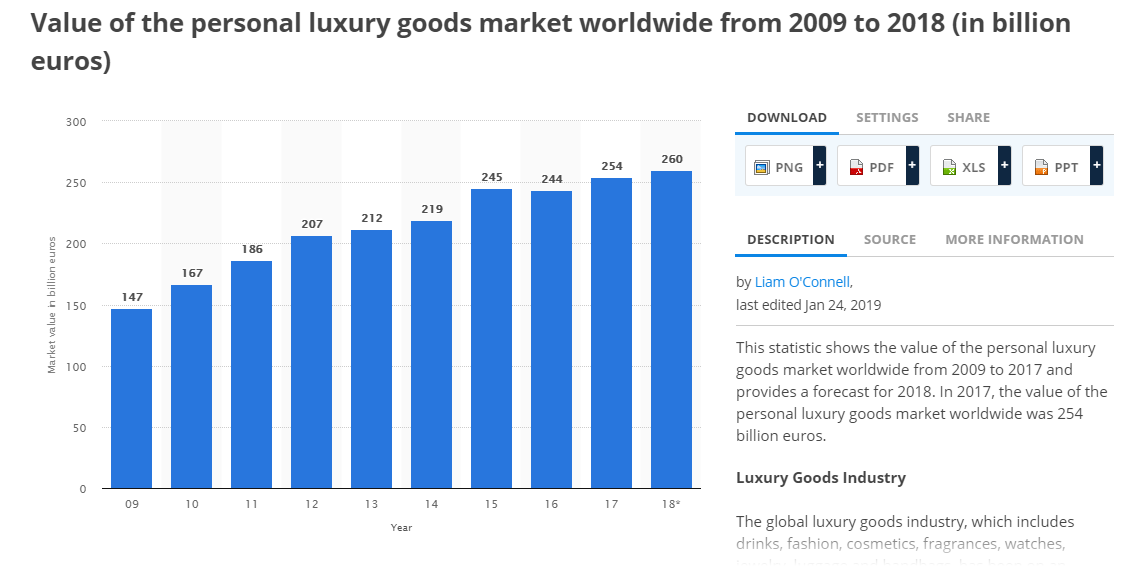
There are fundamental strategies that these brands use to grow to household names.
Any company can use these techniques to instantly make their brand appear more luxurious, authoritative, and exclusive.
Follow along if you’d like to learn how.
1. Create the clubhouse effect
A product isn’t luxurious if everyone has access to it.
That’s why every luxury brand has an aura of exclusivity and rarity. I like to call it the clubhouse effect.
If you can’t drop $2,000 on a purse, you’re not in the clubhouse. If you don’t own the $125,000 BMW, you’re not in the clubhouse. You get the point.
You can create this effect by using rare materials, creating a limited amount of inventory, or only catering to a very specific target audience.
Have you ever seen those Yeezy sneakers everyone is going crazy about right now? They are the perfect example.

Adidas purposely only creates a limited amount of every new model to make them appear rare.
While they sell for $200 from a retail store, they are often resold for upwards of $1,000!
This is also an excellent example of using scarcity to entice people to purchase the shoes because there’s a good chance they won’t be able to get them, or they’ll have to pay insane resell prices.
Another brand we can learn from is Paul Parkman. This luxury shoe company uses exotic materials like crocodiles and python to make their footwear one-of-a-kind.
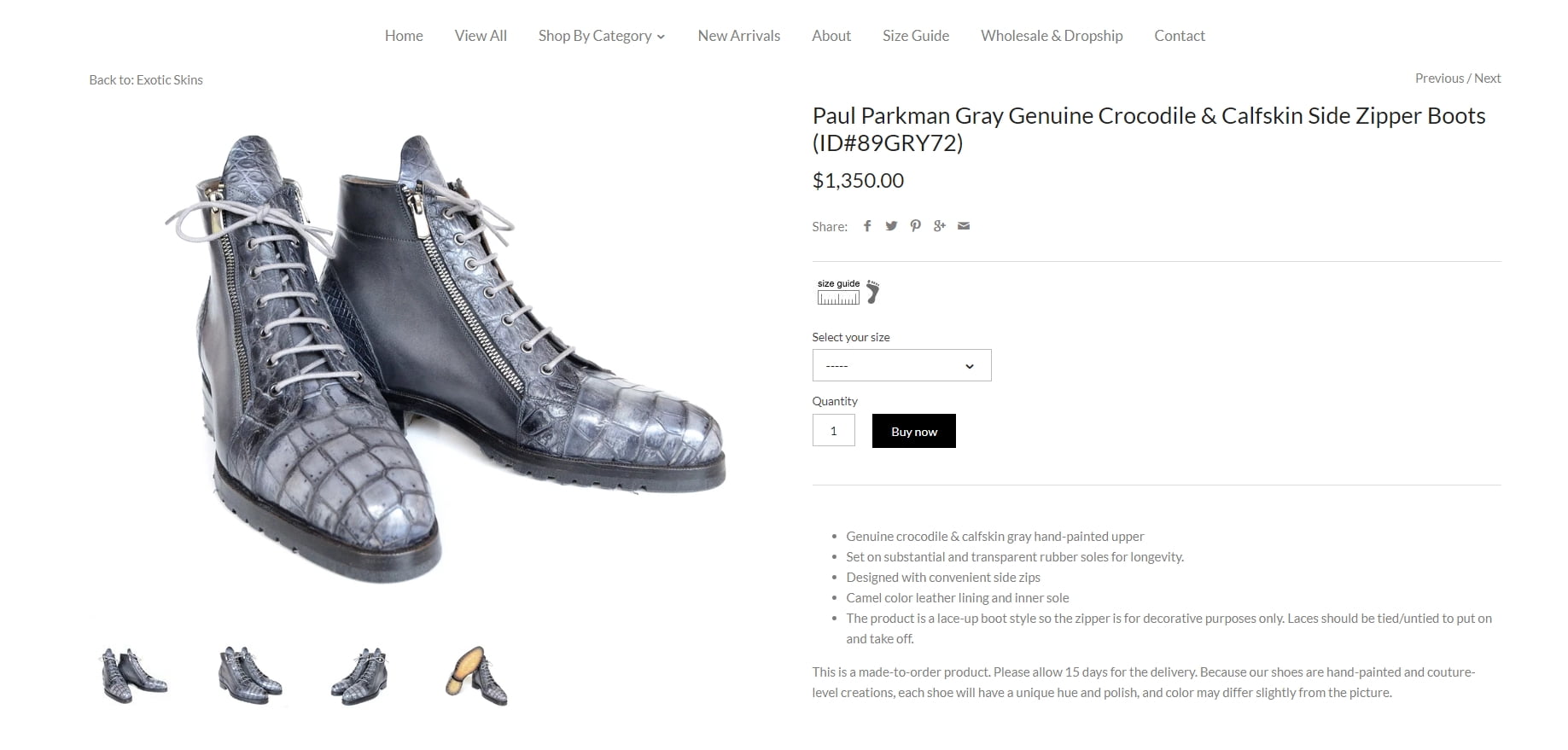
You can’t purchase boots like these just anywhere which creates an effect of rarity.
This builds tension as a result. Customers know that they have limited options when searching for this kind of product and have to make a decision sooner than later.
2. Help customers use their imagination
Let’s be honest. A big reason why consumers purchase luxury goods is to portray a certain image, look flashy, and appear wealthier than they are.
I’m generalizing, of course, but keep with me.
It’s not outrageous to think that someone buying a luxurious sedan wants to look professional and feel business-like, right?
This is exactly why you can market your luxury product by helping them imagine what it would be like to experience having it.
Continuing with the car example, you might write copy for an advertisement or web page saying something like:
You will feel like a millionaire driving this new BMW 328i and everyone will turn their head when you drive by thinking you are one.
Sales copy like this appeals to the deeper primal and emotional reason that a customer is purchasing a luxury product.
It also allows them to imagine what it would be like to use the product, which is a car in this case.
This strategy is especially effective for items you can’t easily try, like a vehicle.
Rolls Royce subtly pulls off this technique on a web page for their new SUV.
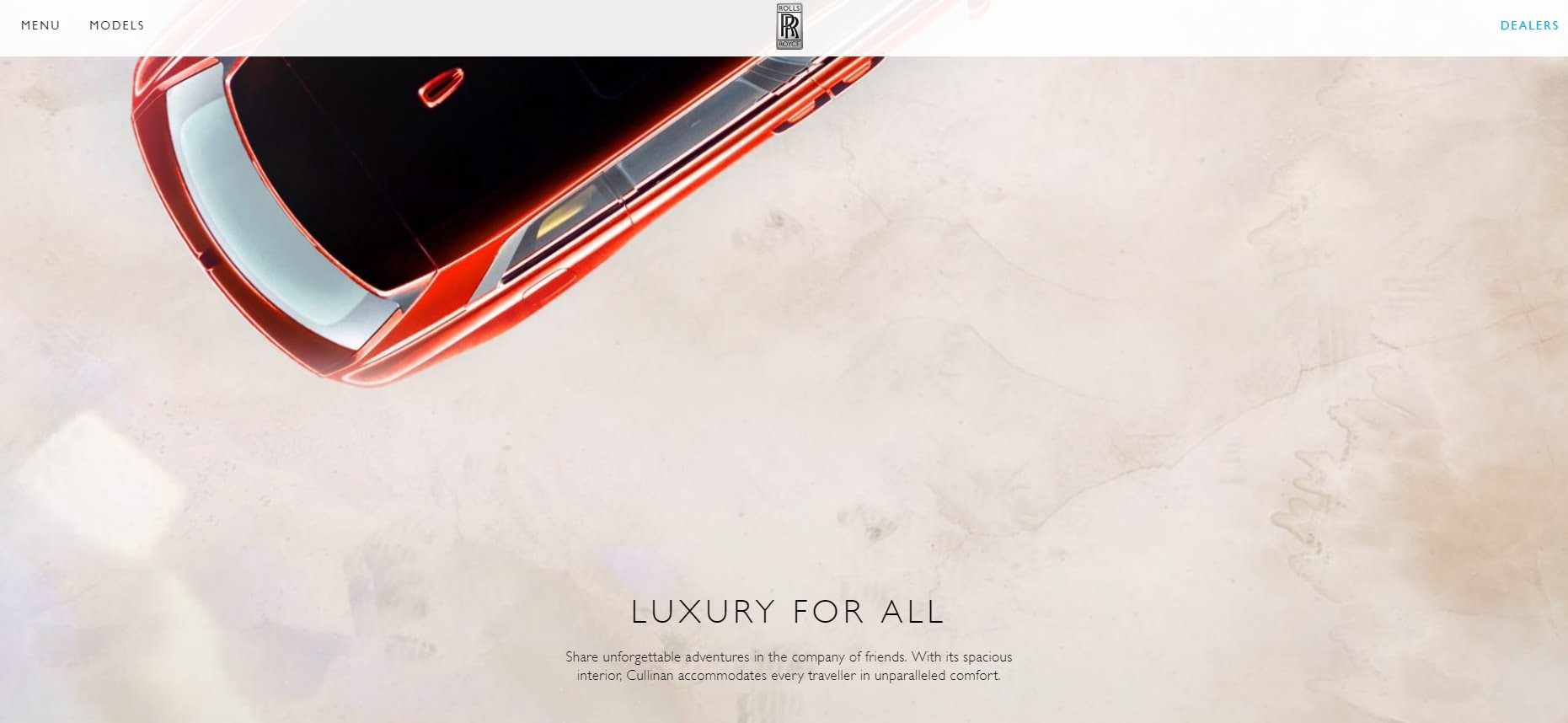
They state that the Cullinan has incredible comfort and space for creating unforgettable memories with friends.
This can instantly make customers imagine what it would be like to visit a cottage or road trip in this car.
3. Use influencers to make products go viral
Did you know that 39% of brands plan to increase their budget for influencer marketing?
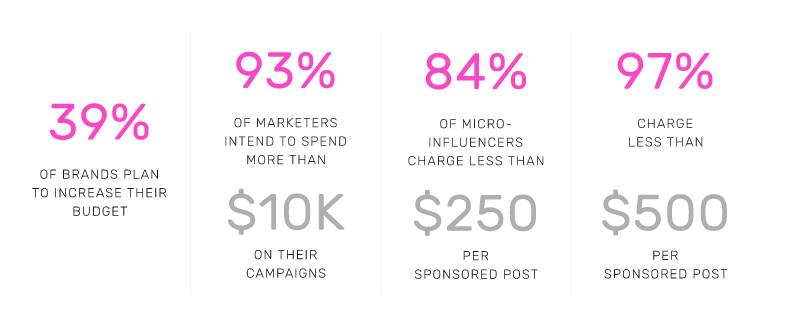
You should, too.
Influencer marketing is one of the most cost-effective advertising strategies you can invest in.
You can pay a social media influencer or another brand with a large loyal audience to promote your product.
This can easily have a much better ROI and cost-effectiveness than PPC or many other approaches to marketing a luxury business.
The key is to find influencers who share similar values and target audiences.
Otherwise, you will be advertising to the wrong group of people and won’t see much results from your campaign.
And there’s no better place to find luxury influencers than Instagram.
I recommend that you use hashtags to search for relevant accounts within the industry, like #luxury, #luxurylifestyle, or niche-specific keywords.
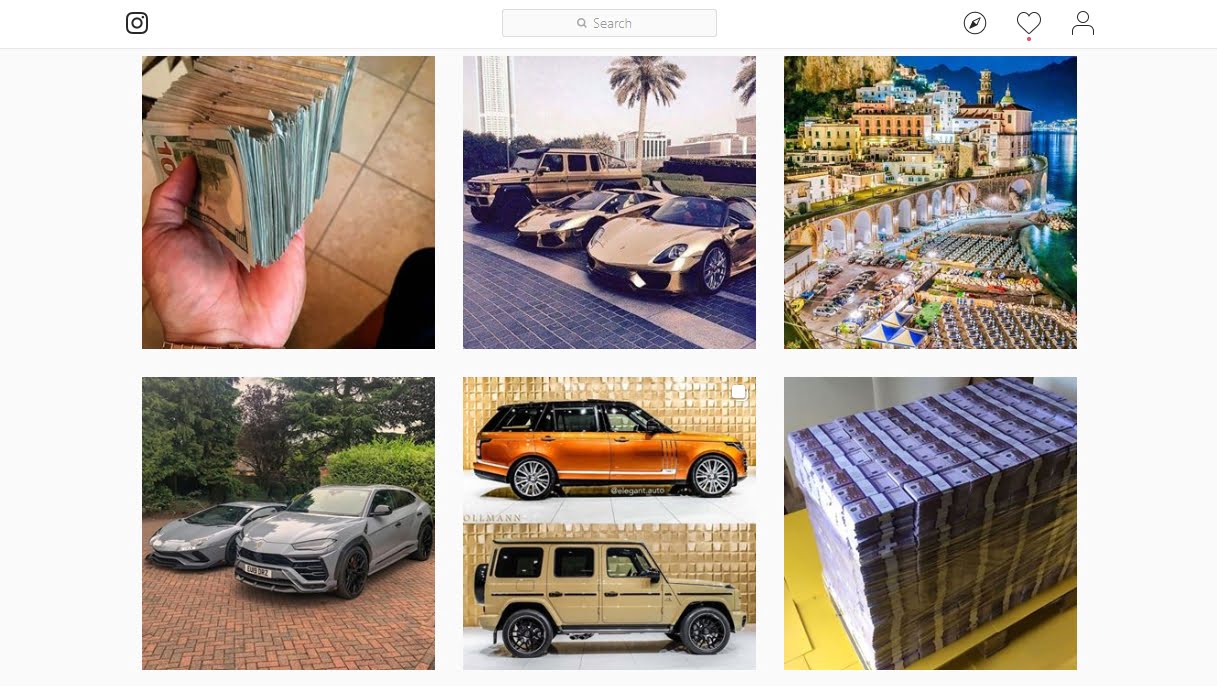
Find accounts which have potential and save them in a spreadsheet or another tool.
You can have your social media or PR team reach out to them, asking if they’d like to collaborate.
Ask for their rates and if they’d be willing to accept a free product in exchange for a sponsored post.
Alternatively, you can have them shout out your brand, new product, or promotion without sending them any physical goods.
Luxury goods come with high price tags, so it’s rare to send an influencer designer clothing, a sports car, etc.
4. Don’t neglect customer service
When you step into a designer store like Burberry or Louis Vuitton, what’s the first question you’re often asked?
“Would you like a glass of champagne or tea?”
That’s how it’s done.
Brands like these treat their customers like kings and queens. Offering champagne and having a lounge within stores also adds to the luxurious branding.
It makes you feel like you’re in a completely different world.
Loyalty and repeat purchases are huge components of a successful luxury business.
Customers who come back to purchase new releases or existing products have very high average lifetime values.
This is why you must treat them extremely highly and ensure they are 100% satisfied.
As a matter of fact, 55% of consumers would pay to have a better customer service experience.

Live by the saying, “The customer is always right,” and you will have no shortage of loyal customers in the long term 🙂
5. Pricing reflects luxury
If Ferrari’s sold for $15,000, they wouldn’t appear very luxurious.
Everyone would have them, which would negatively affect the exclusivity, as I spoke about earlier, and it would make them appear less special.
Don’t get me wrong.
I love supercars, and I’m sure a Ferrari is worth every penny it’s sold for, but I don’t doubt it’s marked up to hundreds of thousands of dollars on purpose.
The price positions it as top-of-the-line and miraculous.
This is why one of the smartest strategies luxury brands can use to increase revenue is simply increasing how much they sell products.
Imagine that you received 1,000 orders every month at an average value of $300.
If you increased the average value up to $400, your monthly revenue would jump from $300,00 to $400,000!
You don’t need any extra customers or new marketing channels. You simply just increase how much you sell your products for.
Higher prices are also associated with quality, rarity, and worth, which aligns perfectly with a luxurious item.
6. It needs to look and feel the part
Sure, the price can be hundreds or thousands of dollars, but does it feel and look that way?
When you hold a Louis Vuitton purse, drive a BMW, or wear a Rolex, it doesn’t feel like it’s your average product.
The attention to detail, materials, and engineering all make these products worth their price point to the correct audience.
Imagine trying on a watch. The bracelet jingles; it’s flimsy and looks like something you’d buy at the dollar store. That’s not luxury.
Look at a Rolex watch, though.
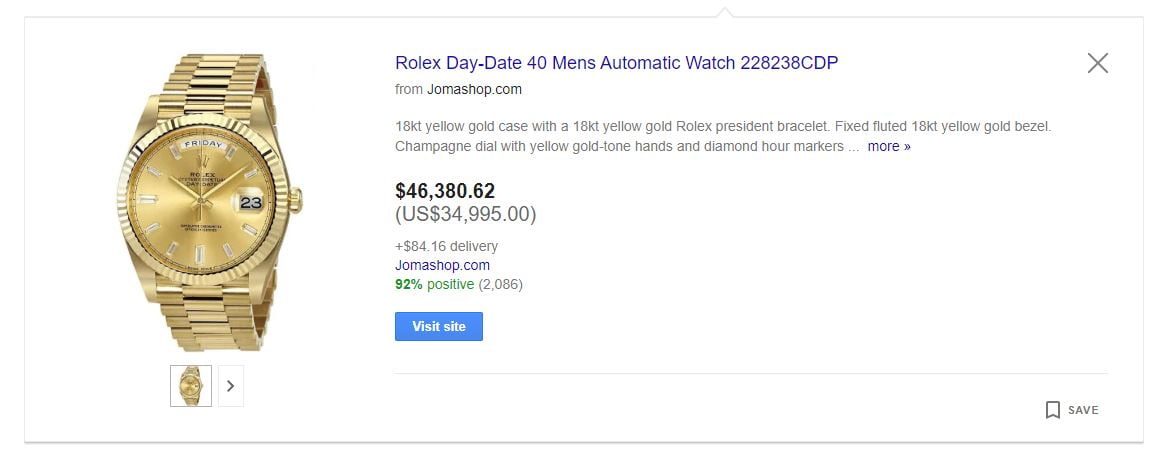
The 18k gold and diamonds instantly make this model look expensive and luxurious.
You don’t have to question whether it’s a high-value product or not. The appearance, weight, materials, and everything used to create it tell you the whole story.
It’s the same way with cars. An 80 year old grandma could tell you that a Ferrari is expensive and high-end by taking a quick glance at one.
While it’s not a direct marketing tactic, think of how you can make your product ooze luxury with its appearance and materials. That will trump gimmicks any day.
7. Have a clear buyers persona
Everyone has different needs, desires, and budgets.
Just because a person doesn’t want to spend $2,000 on your shoes doesn’t mean you’re doing anything wrong. They’re simply not the right customer.
There are people that will buy your high-end product for top dollar. Those are the people you need to engage with.
This is exactly why businesses need to clearly lay out a buyer’s persona when performing marketing and advertising.
A buyers persona is a representation of your target audience. Think demographics, psychographics, values, beliefs, etc.
Narrowing down all of these traits allows you to hyper-target a special segment of customers.
Once again, it doesn’t matter how niche your audience is; they are out there.
The first step is to properly identify them, though.
You can then speak in their language, solve their individual problems, and go where they hang out.
8. Merge your brand with virtual reality
When you think of virtual reality and artificial intellgience, the fashion industry isn’t the first thing that comes to mind. That’s changing.
VR is quickly becoming adopted by fashion brands because of its potential to improve customer experience and sales.
How? Firstly through the use of virtual changing rooms. That’s right. Customers can essentially try on clothes without ever needing to visit physical stores.
Look how Gap developed a mobile app that allows users to see what clothes would look like before buying them:
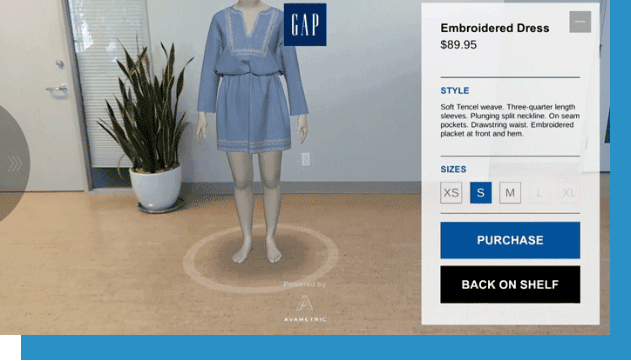
Another similar app is Wanna Kicks by the shoe retailer Wannaby. This app allows you to take a picture of your feet to see what shoes would look like on them.

These types of apps are becoming more and more common. It’s easy to see why, too.
The fashion industry is a tough nut to crack. Customers need to try clothing and shoes on to ensure that they fit properly and that they like how it looks.
That’s tough to do by just looking at pictures.
Virtual reality solves this issue by giving customers a more realistic perspective of products.
While it will cost a pretty penny to develop and deploy an app like this, I wouldn’t be surprised if your business experienced increased sales and fewer refunds as a result.
Final thoughts on luxury marketing
The luxury industry is one of the finest examples of how to pull off branding and positioning properly.
If you’re growing a luxury brand yourself, apply the following main takeaways from today’s article to start growing your brand faster.
You can also learn more about marketing in my online courses.
- Make your products appear exclusive by producing a limited amount, using rare materials, or only selling to a specific customer base.
- Write copy that helps customers imagine would it be like to experience using the product.
- Take advantage of influencer marketing to place your brand in front of a wider audience.
- Treat your customers highly and give them an experience they can’t get anywhere else.
- Take advantage of pricing to make your brand appear more luxurious and high quality.














